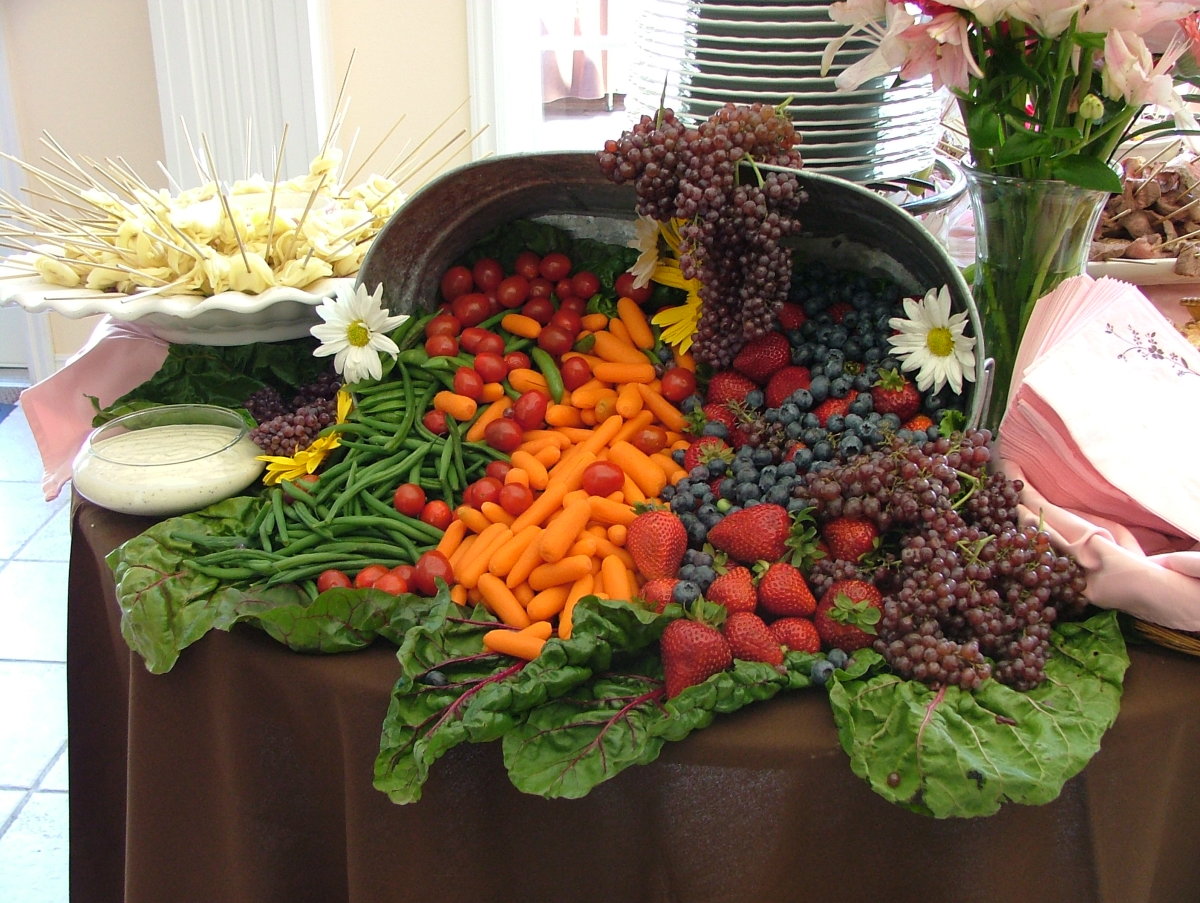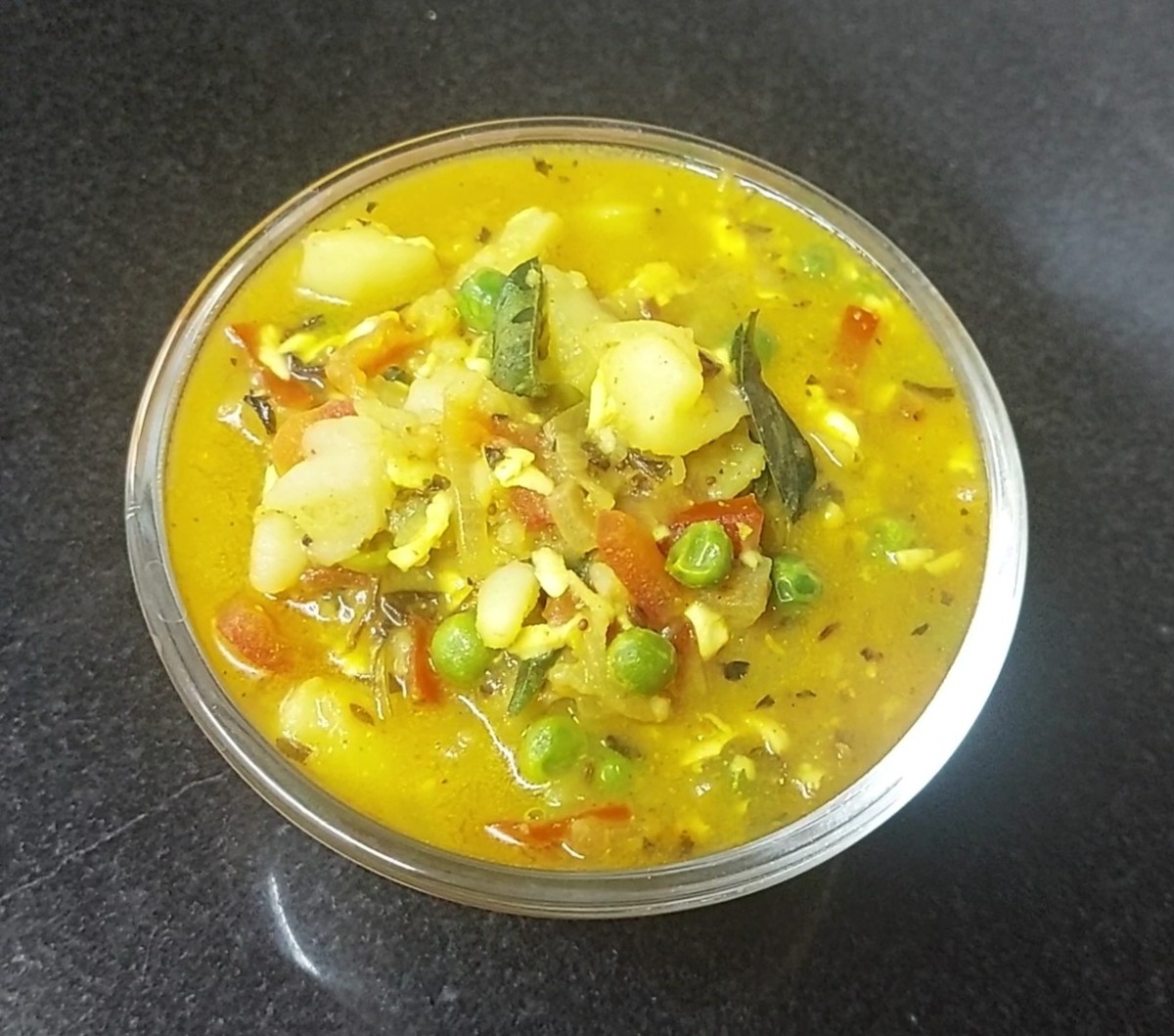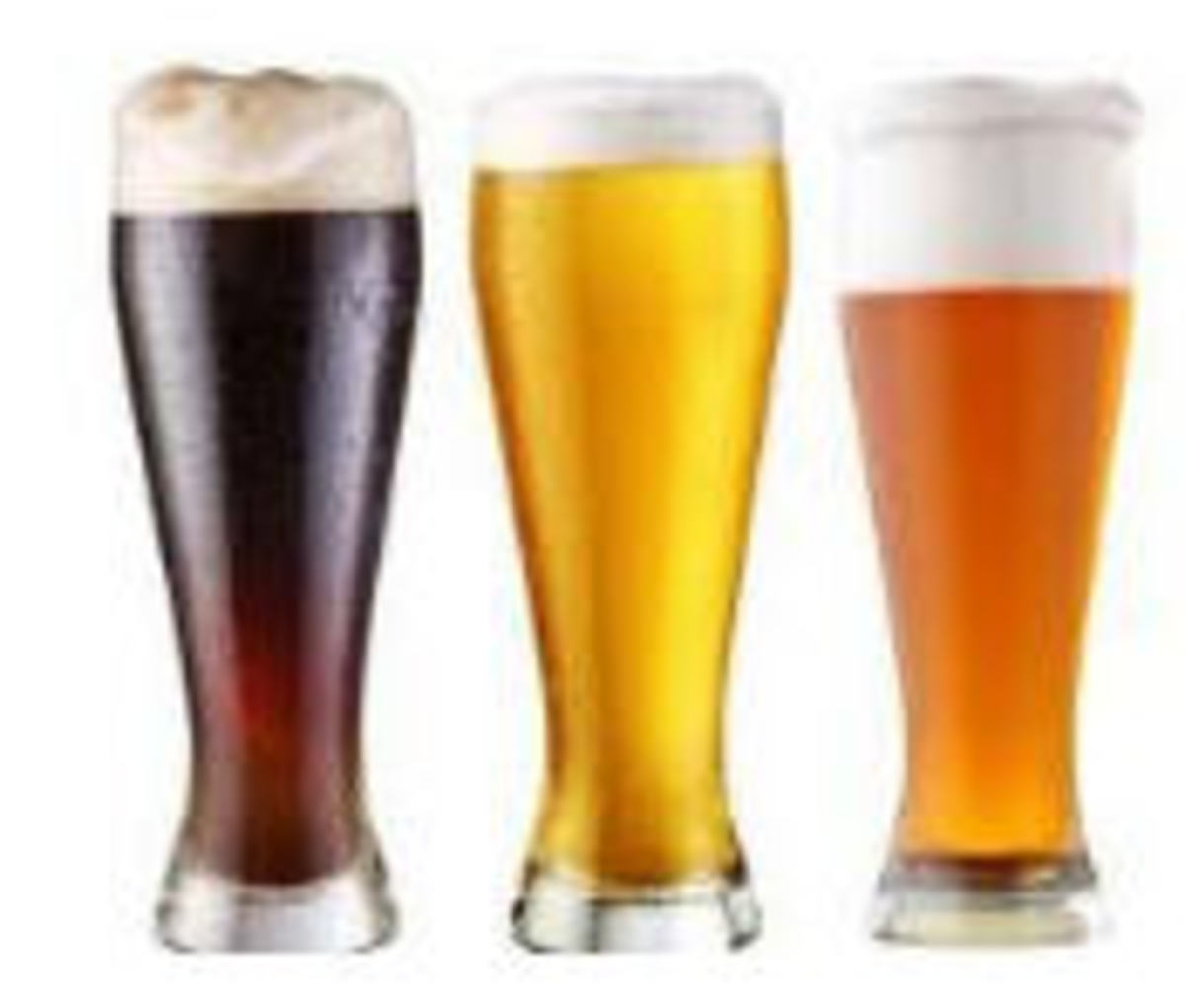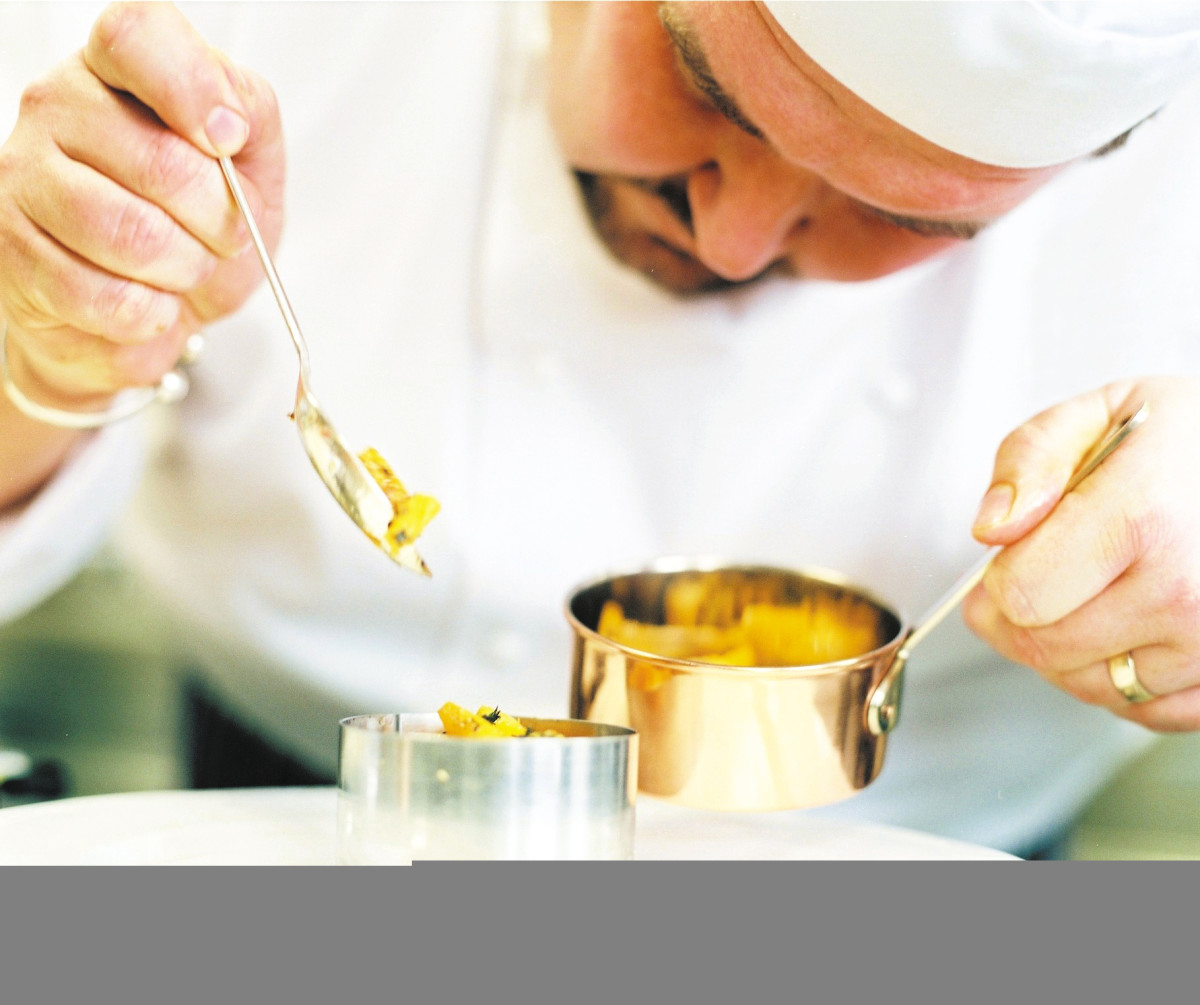Eating Clean
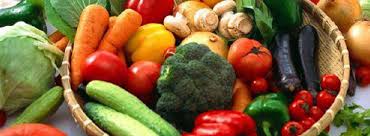
We live in a world where — for the first time — parents may outlive their children because of the obesity epidemic affecting our young children.
So if you want to lose weight, be healthy and have a long-term sustainable eating program…
If you want to look better, perform better and feel better…
And if you want to opt-out of the obesity crisis…
Then Clean Eating is the solution.
So what exactly is Clean Eating?
And what makes it so special?
Clean eating — put simply — is eating food in its most natural form, as nature intended it to be eaten.
It’s eating food that is not manufactured, it’s not packaged in a factory, it hasn’t been designed by food scientists and it doesn’t rely on clever marketing tricks to sell it.
Clean eating is what our Grandparents and their parents just called food.
Our Grandparents grew their food, caught it and killed it (or bought it from someone who did it for them).
Clean Eating is consuming the stuff that grows in the ground, is picked from bushes, plucked from trees…
It’s the stuff that flew through the air, swam in our waters or grazed on our land…
And while that might sound overly-simple, or boring.
This is what we evolved and were evolved and were designed to eat, digest and absorb. These are the foods that fill us, satisfy us, nourish us and repair out bodies.
There have no chemicals.
They weren’t designed in a laboratory.
They are just food.
Clean eating is eating real food with the emphasis on real.
Clean Eating Versus Dieting
The word diet is a derivative of the older word diaeta which means “a way of life”.
So the word diet in the modern meaning couldn’t be further from the truth. Today you go on a diet. Today a diet is a short term fix to help you lose weight — usually drastically — because things have gone wrong (you’ve made poor diet decisions and now you’re overweight - things have gone wrong).
The problem with diets is they are usually gimmicks and temporary fixes.
They are gimmicks created with one thing in mind…
Profit!
Diets are created with the market in mind. Maybe there’s the donut diet because the creators know there is a market for people who want to lose weight but don’t want to give up their donuts.
So they create the donut diet.
And the donut diet works.
If you stick to it and consume nothing but your five donuts per day you’ll eat approximately 2000 calories per day.
If you happen to burn 2000 calories per day then you break even. If you burn 2500 calories then you’ll lose weight. If you only burn 1500 calories then you’ll start to gain weight.
The donut diet does — in theory — work.
But that doesn’t make the donut diet a good thing.
You won’t feel full. You won’t feel satisfied and you definitely won’t feel nourished. Donuts have of lots of calories and very little nutrients.
Plus they are not really food (more on that a little later).
And that’s the premise behind many diets.
They create a calorie deficit so you eat fewer calories than burn without any regard for what your body really needs to thrive and survive.
What our Grandparents just called food!
Eat Clean, Live Longer, Be Healthier, And Look Great!
Our bodies evolved thousands of years ago to eat, digest and absorb the goodness found in real food. And since our body is the only place we can live it’s vital we fill it with the right food if we’re to stay happy and healthy for longer.
It’s no coincidence these are the same foods that make us feel full, provide the fuel our body needs to function optimally (what do you think World Class Athletes eat) and leaves us with lean, healthy physique with minimal body fat — even with minimal exercise.
Add in a little exercise and watch your body transform from lean to athletic physique, from a flat stomach to a full-fledged six pack.
What You Will Learn Inside this Clean Eating Hub
I’ve broken Clean Eating into its basic components so you’ll never fall into the faddy diet trap ever again.
Instead you’ll understand food. You’ll learn to listen to your body and you’ll change the way you think and feel about food forever.
You’ll going to learn how Clean Eating will fuel and fill your body, the nutrients you should include in your diet, the types of food you need to eat to obtain them and you will see changes to the way you look and feel forever.
Every chapter is jam-packed with very simple and easy to implement ideas so you can start to make small changes that have big results starting today.
Plus you’ll learn how to overcome the hurdles that catch so many people out.
These are the hurdles that cause so many fad diets to fail.
You’ll learn how to easily prevent overeating and start turning Clean Eating into a natural habit that starts to happen automatically — you’ll make healthier food choices (and feel like crap when you eat low quality processed food products).
Get ready for the new you.
A leaner, healthier and happier you.
It’s time to talk food…
How Our Grandparents Used to Eat
My Grandparents had a small plot of land.
They grew potatoes and vegetables. They had chickens (lots of chickens), got their milk from a local shop or local farm and visited the local butcher for their meat.
Food was food.
It wasn’t packaged; it didn’t have an ingredients label.
And everything was cooked from scratch from raw ingredients.
My parents on the other hand grew up in a generation that experienced a rapid rise in convenience. They grew up with television and were exposed to lots more advertising.
Times were changing, the standard of living was increasing and (in their defense) they didn’t know what was happening.
So what was happening?
Big business is what was happening. And big business knew how to make the most of increasing incomes, the faster pace to life and the natural desire for convenience.
Unlike our generation our parents didn’t have the same access to information we enjoy today.
One of the best examples of this was when people were allowed to smoke in hospitals! It was seen as a good thing to do, a healthy thing to do!
So thanks to the boom in convenience, the influence of advertising and the terrible lack of food education any of us receive, for the first time ever, parents may start to outlive their overweight children.
Something unheard of in our Grandparents time.
It’s time we all started to Eat Clean, like our Grandparents did (again).
The Rules for Eating
There are lots of reasons our Grandparents ate so much better than us.
They had less money so they couldn’t afford to over-indulge, eat out at restaurants or upgrade to a super-sized meal.
They couldn’t afford to buy products (think of any sugar laden cereal for breakfast) and so there wasn’t a market for these products back then. Instead they ate porridge or ate eggs.
That’s two big factors right there!
They ate real food and they ate less food.
Or more accurately — they ate the right food in the right quantities.
And they had rules for eating.
For example, a meal might be meat, potato and two portions of vegetables. As boring as that might sound it was a rule or a guideline for eating. A very simple rule that meant they ate the right amount of carbohydrates, protein, fats and vegetables for their main meal.
And nothing was wasted.
By that I don’t mean they ate everything on their plate I mean they ate everything! They didn’t just eat the prime cuts of beef from the cow. They ate everything. They ate the liver, the kidneys and all the rest.
Our grandparents had a diversified diet and they ate food that was season.
This is the essence of Clean Eating.
Clean Eating Compared With the Modern Diet
Our modern diet is best summed up with an example.
Take breakfast.
At some point in time - some very clever marketing guys realized that we have little time in the morning to prepare a wholesome, nutritious breakfast (that tastes good too).
So they invented cereal. Just open the box, pour it out and cover it with milk. It’s quick and it’s easy.
Today hundreds of thousands of us have been brought up eating nothing but cereal and milk every day for breakfast, for several decades. It’s terrible.
If you needed a bigger breakfast then you might have toast and glass of orange juice.
Which might sound ok until you take a step back and analyze it.
You’d have a dose of carbohydrates (cereal) with milk, with another dose of carbohydrates (the sugar in the juice) with more carbohydrates (the toast).
Or worse still you’d have pancakes covered in syrup, donuts you bought on the way to work or yesterday’s left over pizza — all really bad carbohydrates.
All of these foods above are food products. They are not real food cooked from scratch in your kitchen. For the most part they are processed, factory designed and heavily marketed.
This is not what food should look, sound or taste like.
There are no rules for eating either. Carbs with carbs, with more carbs. Where are the other nutrients? Where is the balance?
Sadly this is the Standard American Diet or the SAD diet.
Time to Take a Step Backwards
It’s time to take a step back. A 50 year or even 10,000 year step back and to start eating real food as God created and intended us to eat.
10,000 years ago we didn’t have to think about what was good or bad to eat. We just ate. It was all natural, unprocessed food. We didn’t need a food education because that’s all that existed. It was either edible or it wasn’t.
Unfortunately today we do need a food education and to know about the calories we are consuming because if we don’t then some big company will just sell us on buying more food products (and then the diet pills when we get too fat).
We need to know about the food we eat because we are bombarded by marketing and advertising 24/7. We are surrounded by the diet gurus who cherry pick scientific literature (no matter how good or bad it is) so they can sell their new products.
And that’s where we’re going to begin — with a little bit of a food education that’s simple and easy to put into practice.
Let’s get started.
What You Need to Know About Food
A Basic Guide to Understanding Food
The reason we eat is primarily for nutrition and nourishment.
While many folk will nod their heads in agreement, it’s a vague answer.
What exactly does that mean? Nutrition and nourishment?
It means we eat food — not for the pleasure, although it is pleasurable — because we need fuel and we need building blocks for the growth and repair of our body. And yes you might be thinking that’s obvious — and I agree, it is — but if it’s so obvious, then why do so many of us fail to eat real food with any nutrients?
Instead millions of us would rather eat for pleasure.
It looks like we all got a little bit confused and starting to eat for fun, as a past-time, for something to do, as a hobby and forgot we need nutrients to feed the machine.
The nutrients we eat can be broadly divided into two categories — macro and micronutrients.
Macronutrients are the nutrients we need a lot of — they are proteins, fats and carbohydrates.
Micronutrients are the nutrients we need a little of — vitamins, minerals and phytonutrients.
And that’s it.
These are the basic boxes we need to tick to eat healthily.
Micronutrients are often added to foods, for example you’ll see breakfast cereals fortified with vitamins and minerals.
But ask yourself “What’s better?”
To get vitamins and minerals that have been artificially added to a factory made food or to obtain them in their natural state from the real food Clean Eating supplies.
It’s a no brainer.
Plus when we eat real food we get an array of nutrients. Real food provides a wide variety of macro and micronutrients and (dare I say it) likely contains a lot of additional nutrients we might not be aware of, including the enzymes and co-factors necessary to digest, absorb and use other nutrients.
On a side note, many of today’s allergies may actually be a result of having too narrow a bacterial flora in our gut. Bacteria that originally would have been obtained from the outdoors environment and — quite probably — on and in our food. But our near sterile lives (including sterile, packaged foods) remove these good bugs from our world to our detriment!
So let’s start with the big stuff..
The Macronutrients!
Macronutrients: Proteins, Fats and Carbs
Proteins, fats and carbohydrates are macronutrients.
They’re the foods we need the most of.
Protein provides the amino acids — the building blocks — our body needs to repair old tissue and to create new tissues (for example, when you exercise you break down muscle and then your body uses amino acids to repair itself).
We need protein, it’s essential.
Fats are also building blocks. Fats provide the fatty acids we need to create hormones and are the building blocks that make up the cell membranes of the billions (or even trillions) of cells our body is made of.
In a nutshell, we need fat in our diet, it’s essential.
Carbohydrates are a fuel source. They’re not building blocks like proteins or fats so (in theory) we can live without carbohydrates just fine. Without carbohydrates in our diet our body will use protein and fats as fuel to get us through the day.
Most of us go wrong with our diet because we don’t know what macronutrients are and we don’t understand the role they play in our diet.
So we typically eat too much fuel (too many carbs) and not enough of the essential building blocks (the proteins and fats).
This is made worse with processed food products. With these we are providing sub-standard macronutrients that have been tinkered and tampered with by the food companies to modify the taste, improve the shelf live or make them look like they’re in their natural state.
Just to give you an example…
Say you were to consume 150 grams of carbohydrates per day, what is better…
The carbohydrates you consume from eating starchy vegetables, wild rice and sweet potatoes or the carbohydrates you get from mass produced white bread, breakfast bars or the microwave meal you bought?
What’s better a calorie of protein from a fresh tuna steak or a calorie of protein from the chicken in a bun you bought at a fast food restaurant?
Clean Eating is about choosing foods in their most natural and nutritious state.
Your food journey begins by knowing your macronutrients (proteins, fats and carbohydrates), understanding that these are the nutrients we need in larger quantities and then learning to eat them in their most natural state and with the right portion sizes.
What is really amazing is food created in a laboratory doesn’t make you feel full in the same way that real food does.
Have you ever eaten not one but an entire pack of cookies?
But could you devour five bananas?
I doubt it. Real food makes us feel full and satisfied. It doesn’t leave you feeling sickly, bloated or tired.
And real food tells your body when you’ve had enough.
It’s hardly a surprise when food manufacturers and fast-food outlets would rather you didn’t stop eating because the more you eat the more they make.
Let’s delve deeper into the three macronutrients.
Protein
Protein is typically found in animal products with lean beef and fish being among some of the best sources of protein. The definition of a good protein source is based on the amino acids it supplies. Animal proteins provide us with a wider variety of these amino acids than (say) a plant might.
Vegetarians and vegans can get their protein from non-animal sources albeit the quality of the protein is typically not as good from plants so it’s important they eat a wide variety of vegetables and legumes (lentils, for example) to supply them with all the amino acids they need. It’s is achievable but does require a little more work, trial and error.
Fats
There are three main types of fats you need as part of your diet. They are saturated fat, monounsaturated fat and polyunsaturated fat. Meat, in addition to protein, will include saturated fats and it’s usually a good idea to focus on eating the leaner cuts of meat (or choosing leaner sources of meat) so you don’t overdo the saturated fats.
Monounsaturated fats can be obtained from olives, macadamia nuts and avocados while polyunsaturated fats are readily found in oily fish (think mackerel, salmon and sardines).
Ideally you want to have an even mix of all three types of fats in your diet in equal proportions (roughly one third saturated, one third monounsaturated and one third polyunsaturated). What many people don’t realize is how natural foods supply a range of macro and micronutrients all at the same time.
Eggs for example have a higher level of monounsaturated fat that they do saturated fat and the egg white is a great source of protein. In the same way that eating a portion of fish won’t just provide a lot of your daily protein requirements, it will also help you with your daily fat requirements.
Carbohydrates
Carbohydrates are the starchy and sweeter foods in our diet. Brown rice, oats, quinoa and sweet potatoes are all examples of some of the better carbohydrates you can choose from.
The best carbohydrates are the ones with the lowest glycaemic index (GI). That means they release their energy slower, over a longer time frame than those with a higher glycaemic index.
This is one of the reasons you’ll see brown carbohydrates recommended over white.
Brown rice for example, has a lower GI than white rice. The same is true for brown and white bread and pasta.
Incidentally both bread and pasta are food products.
So when it comes to choosing your carbohydrates choose those with lower glycaemic indexes.
Fruit is high in sugar (fructose) and has a higher GI. While you want to restrict how many high GI foods it is good to include some fruit in your diet because they have lots of fibre, vitamins and minerals that are all very important for our health.
You’ll also consume smaller amounts of carbohydrates in vegetables. In fact many people on very low carbohydrate diets (bodybuilders in the final weeks before competitions, for example) will obtain all of their carbohydrates from their fruit and vegetables and avoid the more obvious sources.
Let’s talk micronutrients…
Micronutrients: Vitamins, Minerals and Phytonutrients
There’s a Russian saying that goes…
“Meat for strength, vegetables for health!”
With meat providing your protein (and the basic building blocks your body needs) the vitamins, minerals and phytonutrients are essential to our healthy but needed in smaller volumes.
These are the little things that make a huge difference.
Just to give some examples:
Anaemia results from a lack of iron (a mineral), iodine deficiencies can lead to thyroid problems, and scurvy is caused by a lack of Vitamin C and Rickets from a lack of Vitamin D and Calcium.
The list of illnesses from a lack of micro-nutrients is diverse.
Phytonutrients are the natural chemicals found in plants. These include the anti-oxidants and anti-inflammatory chemicals found in berries and the anti-bacterial properties found in garlic.
All essential and all obtained without having to think about with Clean Eating.
These foods occur naturally in our foods, are critical to our health and well-being as well as lacking from processed food products. The exceptions being foods that are fortified with vitamins and minerals (for example, cereal marketed towards children).
Again, what do you think is best?
To obtain these essential micronutrients in their raw and natural forms, or as additives to a food product?
When you eat clean this isn’t a problem. With a varied diet you tick all the boxes and consume all the macro and micronutrients your body must have.
The majority of the Micronutrients we consume in our diet come from the fruits and (more so) the vegetables in our diet. For this reason there have been efforts to get more of us eating our fruit and vegetables. In the UK there is a push to eat five portions of fruit and vegetables per day although closer to ten portions is more likely necessary.
If you’re worried you couldn’t eat (or don’t want to eat) ten portions of vegetables per day, don’t worry. This is covered in the chapter on portion size and isn’t as hard as you might think!
Now you understand the basics of macro and micro-nutrients let’s put start to put some actionable steps in place.
The Rules of Clean Eating
By now you understand that Clean Eating isn’t a sexy new fad, it doesn’t require expensive shakes and it isn’t a short term fix.
It is how you should be eating for optimal health, optimal performance and to make sure you tick all the boxes when it comes to getting the nutrients your body needs.
Bizarrely the best feature of Clean Eating isn’t the astounding results (even though that’s what drives so many people to start Clean Eating) it’s the simplicity.
The rules about what you can and cannot eat are crystal clear and easy to understand.
Your first question is “Is this a food or is it a product?”
If it’s a food then chances are, it is good to eat..
If you’re not sure then ask yourself “Does it need an ingredients label?”
If the answer is no because there is only one ingredient - you have food in front of you.
Most diets are hard work because they are so restrictive and so hard to get right. With Clean Eating, food selection is as easy as it gets.
While Eating Clean and keeping it this simple (is it a food or is a product) you will get close to achieving your weight loss goals.
But if you want maximum results then you need a little more details.
For example:
How often should you eat?
How much should you eat?
When should you eat?
And what should a meal look like?
Let’s tackle these questions now.
How Often and How Much Should You Eat?
We’re all accustomed to eating three square meals per day — breakfast, dinner and lunch.
While this is perfectly acceptable it’s not necessarily the best way to fuel your body.
Let me explain.
If you need to eat 2000 calories to maintain your weight, then you divide this by three meals which mean each meal you eat will be roughly 667 calories. These 667 calories will be made up of proteins, fats and carbohydrate.
The problem people who eat three times per day is they get hungry in-between meals.
If you’re awake for 16 hours per day you have over 5 hours between meals. This is time when you might get bored as well as hungry. And when most people get bored or hungry they snack. Now this is OK if you Eat Clean and snack on wholesome food but most people don’t.
A good way to tackle hunger and boredom is to split your calories across 4, 5 or 6 meals. More is better but you have to be practical. Your boss might not like you eating 6 times per day at your desk.
As well as fending off hunger and boredom, eating frequently has several other benefits too.
If you do get hungry you probably only have 30 minutes or so to wait before eating which means you’re less likely to snack on the products in the vending machines or grab a handful of cookies to get you by.
Second, eating more frequently means you eat smaller meals. This has the advantage of reducing the load each meal has on your digestive system. Without going into the details you will lower the changes in insulin levels that a bigger, heavier meal can trigger. This is good for keeping your weight in check and your blood sugar levels more stable.
If the thought of 6 meals per day puts you off remember that the meals don’t all have to be the same size. You could still have three larger meals for breakfast, lunch and dinner with planned snacks in between.
So you might have 500 calories for breakfast, lunch and dinner (a total of 1500 calories). This allows for a mid-morning snack and afternoon snack of 250 calories (the remaining 500 calories).
If you’re not sure how much 250 calories per snack is its 50 grams of porridge or two bananas (these are just examples) both of which are good sized snacks to get you by.
If you’re curious how many calories you need to eat per day there are plenty of calculators available online. Just remember these calorie calculators are estimates based on your height, weight, age and activity levels.
We are all unique individuals with unique energy demands so these are ball park figures to get the ball rolling. Later you can make adjustments to these calories, either eating more or less depending on how your body responds.
You must remember this!
Calorie counting is not an exact science. And while it’s a good thing to do occasionally to help you understand how much you might be eating when you listen to your body and feel when it is telling you to stop eating you don’t need to count calories because when you Eat Clean is hard to overeat.
When you are full, your body will let you know!
Eat Lean Protein and Vegetables Every Meal
From previous chapters you’ll understand you have a protein requirement. This is the most important dietary requirement you have. More so than the carbohydrates most of the population over-indulge on.
And remember how we really need to eat as many as 10 portions of vegetables per day.
These will fill you up and provide your body with all the micro-nutrients it needs.
The benefits of eating lean protein are more than just filling a dietary need. Protein will help you feel fuller which means you’re less likely to overeat.
If you eat three mains meals and two snacks per day then scrambled egg in the morning, salmon at lunchtime and chicken in the evening and you’ve done it. It’s not that hard.
If you wanted to include lean protein for your snacks you might have cottage cheese or a helping of Greek yogurt. Easy.
As for the vegetables. If you are eating 5 meals per day that’s only 2 portions per meal. Try having a spinach omelette for breakfast with a side helping of strawberries. A good mixture of protein and fats in the egg with plenty of micro-nutrients in the spinach and strawberries.
If it sound a little weird eating vegetables for breakfast then that’s only because we’ve been sold on the idea of eating cereal and milk for decades. Your body doesn’t think “Oh it’s morning I must have cereal and milk!” As far as your body is concerned any good meal is OK for breakfast!
And if you think vegetables for breakfast sounds weird then chocolate flavored milk or frosted covered flakes is lot stranger and probably one of the worst (and least nutritious) ways to start your day.
It’s no wonder we’re getting fatter if we’re starting the day on a sugar rush only to come crashing back down and in need to refuelling an hour or two later.
Lots of calories and very little nutrients!
Stop Eating When Your Satisfied (Not When You Are Full)
It takes time for our body to realize we’ve eaten enough. It can take as long as 20 minutes which means if you eat fast (and without chewing) there’s a very good chance you’re going to finish you meal well before your body has registered that it is full.
This means second portions, desserts and causes us to overeat.
The solution is simple.
Slow down! Chew your food and switch off the distractions around you. Eat consciously, tasting and chewing every mouthful and making sure you start the digestive process in your mouth (the chewing and addition of saliva is the first step in digesting your food) before swallowing.
Put your knife and fork down in between mouthfuls if you have to or count how many times you chew your food if you have to. Just slow down!
Then when you feel satisfied (not full) it’s time to stop eating.
Again (surprise, surprise) learning to recognize when you are satisfied happens a lot more naturally with Clean Eating. It’s hard to eat a plateful of lightly steamed vegetables and a lean cut of steak fast compared with tearing through a burger and fries, while washing it down with milkshake.
This is partially because we tend to eat without thinking and without tasting. We’re too busy watching television or playing with our phones to think and taste what goes into our mouths. The best example is watching a movie with a pack of candy or giant serving of popcorn. It usually goes from hand to mouth out of habit and without thought.
That and the fact that many food products aren’t designed to make us feel full. Or they’re loaded with salt to make us feel thirsty and so we buy a drink (usually a sugar laden one).
Eat Healthy Fats
Most naturally occurring fats are perfectly fine and healthy. We need them but unfortunately we tend to over eat saturated fats and that’s a problem caused by poor food choices and a lack of diversity in our diet.
Instead we need to mix it up more and make sure to include a small amount of fats at every meal. You might drizzle your salad in olive oil (monounsaturated fats), have a handful of nuts or have grilled salmon for dinner (polyunsaturated fats).
A nice healthy mix of fats is important for our health.
The most important fats to avoid are the trans-fats found in many processed products and an overindulgence in saturated fats from too much of the same kind of food.
The secret is to not be scared of fats and to make sure you include them in your diet.
Fats don’t make you fat. Too much energy in and not enough energy out is what makes you fat and too many carbohydrates are often the main culprit.
Wind Down and De-Stress!
It’s hard to believe that stress can make us fatter. Stress hormones (cortisol in particular) can serious hinder our weight loss attempts.
Stress from work or stress at home can all contribute towards making us fatter.
But so too can stress from under eating where you are not providing your body with enough fuel to get through the day. This is really common amongst yo-yo diets that put on weight when they over eat, then go to the other extreme and under eat only to stay the same weight or put on more!
The reason is simply because our body is a machine designed to survive and if you’re not getting enough calories inside you then it doesn’t think and understand you are trying to lose weight. It just thinks “I’m experiencing a famine and I need to survive!” before doing what it can to hold onto everything it can (including fat) by shutting down other non-essential processes.
The moral of this story is take the time to relax and de-stress.
Have fun.
Play with your kids, go out with your friends and talk to your partner.
Drink More Water
A staggering 45-70% of the human body is water and it’s critical for virtually all the metabolic reactions that take place within our body.
Aside from the fact that the majority of our body is made up of water (we really do need it) drinking water also makes you feel fuller, for longer so it helps fight hunger and prevent overeating.
Now compare drinking water with drinking a can of soda…
Well there is no comparison. When you drink water you are re-filling your body with the water it needs but with the soda, you’re consuming a high amount of calories with almost zero benefit to your body, your health and your performance. Not to mention what it does to your teeth!
As a general guideline consuming 2 - 3 litres per day is a good starting point making allowances for how active you are. The more you exercise and sweat, the more you need to drink.
If the weather is hotter or you are on holiday then you need to drink more water too.
Again it all comes back to listening to your body and drinking water to quench your thirst.
The best way to find out if you’re drinking enough (or not enough) is by the color of your urine.
Disgusting I know but the darker it is the more you need to drink! If it is pale yellow then you are probably hydrated enough.
Summary
By now you should have a firm grasp on what Clean Eating is.
How to choose foods and while you will have questions — a lot can be answered by starting right away.
Portion size (for example) is often a major talking point but trust me — when you try to tuck into a nice Mexican Chili Beef you made yourself from scratch with raw ingredients with two or three portions of vegetables on the side you will feel when you’re full.
Just make sure to eat the green stuff first. It is filled with fibre which is very important for digestive health and will make you feel fuller. This means you might end up leaving some of that Mexican Chilli for tomorrow (instead of overeating meat and not eating enough of the green stuff).
Now you know the Rules and Principles we’re going to delve deeper in the practical side to Clean Eating — the DOING!


